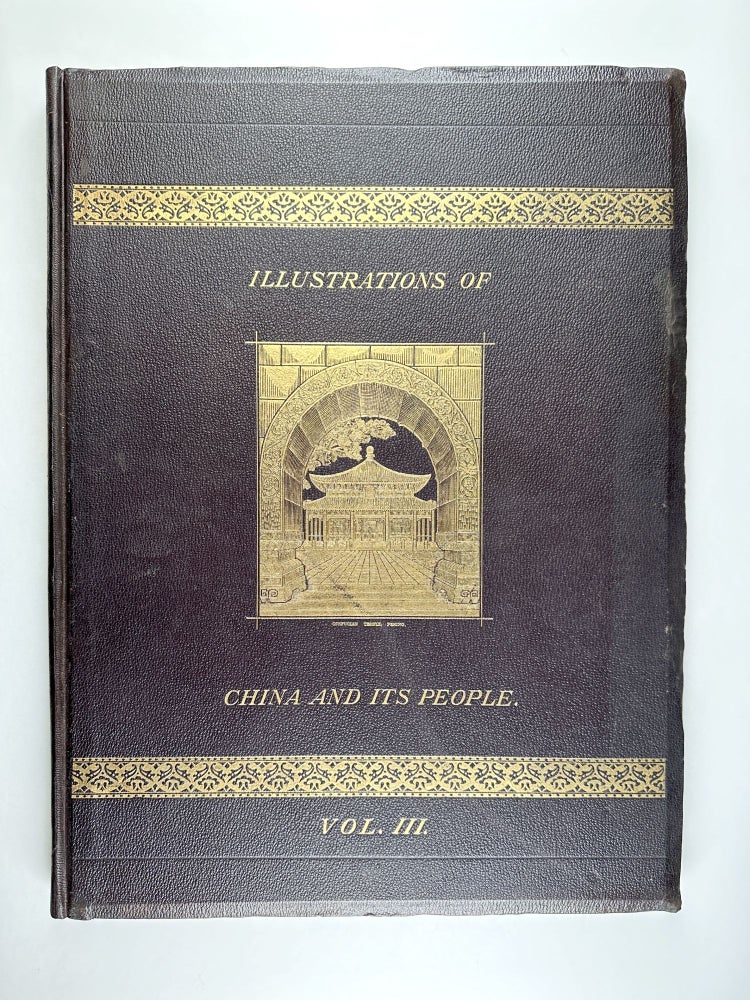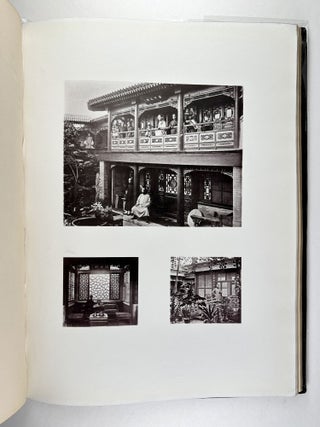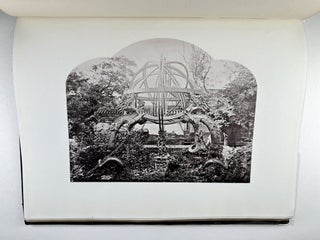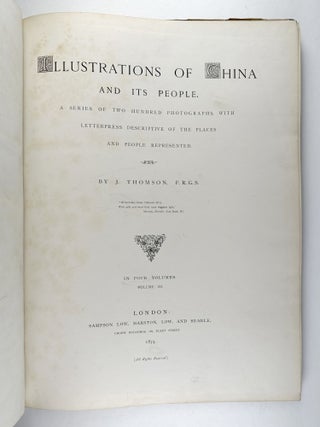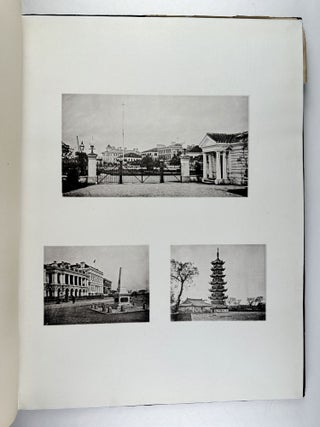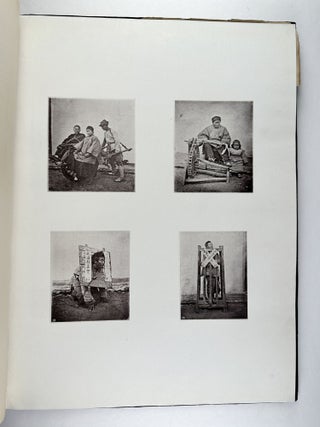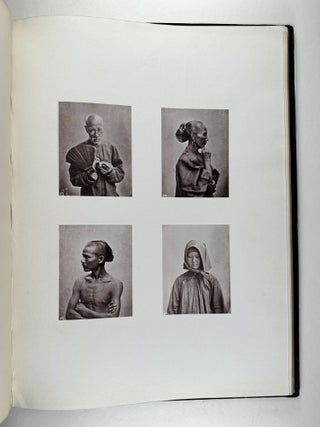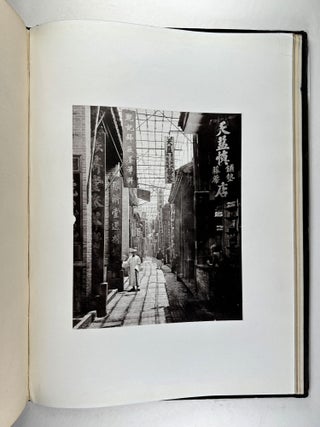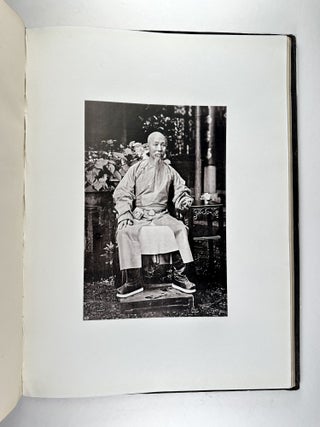Illustrations of China and its people
London: Sampson Low, Marston, Low, and Searle, 1873-74. Four volumes, folio (472 x 345 mm; 18.5 x 13.5 inches). 222 photographs on 96 plates, produced by the Autotype Mechanical Printing Process of Spencer, Sawyer, Bird and Co., London; with guards. Letterpress titles and descriptions. Original black cloth, gilt-lettered and decorated on covers, each front cover with central gilt block of the Confucian Temple, Peking, all edges gilt. Skilful repairs to spines and corners, some uneven toning to vol. 1; some intermittent pale spotting (mainly to prelims), one leaf in vol. 2 with upper corner irregularly trimmed by binder, upper outer corners lightly bumped. Item #409951
First edition of volumes 2-4, second edition of volume 1, of this important photographic record of China, made by the pioneering Scottish photographer John Thomson (1837-1921), one of the first photographers to travel to the Far East. Thomson documented the people, landscapes, art, and artifacts of the Chinese culture. He established a studio in the Commercial Bank building in Hong Kong in 1868, and spent the next four years traveling extensively into many regions, some remote and unpopulated. "His iamges display a genuine interest in Chinese customs and seem influenced by traditional Chinese painting, as exemplified by his treatment of the landscape in 'Wu-Shan Gorge, Szechuan' (pl. no. 138)" (Rosenblum, A World History of Photography, 3d ed., p. 125). While earlier portrait photographs had made it to the West, Thomson's series offered the first actual views of street life. While some, like 'Itinerant Tradesman, Kiu Kiang Kiangsi' (pl. 192) may have been staged, "its sharpness and detail were meant to convince 19th-century viewers of the reality of a scene happened upon by accident" (ibid., p. 172). Ultimately, Rosenblum describes it as "perhaps the most completely realized result of a kind of curiosity about the way people live... the work attempted to make an arcane and exotic way of life understandable and acceptable to the British public by showing industrious and well-disposed natives interspersed with unusual architectural and natural monuments. In doing so, Thomson helped create a style and format for documentation that carried over to projects concerned with social inequities" (ibid., p. 346).
Thomson traveled from the southern trading ports of Hong Kong and Guangzhou (Canton) to the cities of Beijing and Shanghai, to the Great Wall in the north, and deep into central China. From 1870 to 1871 he visited the provinve of Fujian, venturing up the Min River by boat with the American Protestant missionary Rev. Justus Doolittle, and then visited Amoy and Shantou. His travels were often perilous, and many of the people he visited had never seen a Westerner, nor a bulky wooden view camera, before. His subject matter ranged widely, from beggars on the street to Mandarins, Princes and government officials; from remote monasteries to Imperial Palaces. Nearly 700 of his photographs were acquired by the collector Henry Wellcome, and are now preserved in his venerable collection in London: glass-plate negatives coated with collodion. In the words of Françoise Heilbrun, Thomson possessed "an ethnographic and journalistic turn of mind, impeccable technique, original vision, and an admirable sense of composition" ("Around the World: Explorers, Travelers, and Tourists" in: 'A New History of Photography,' ed. Michel Frizot, p. 164).
Price: $55,000.00

